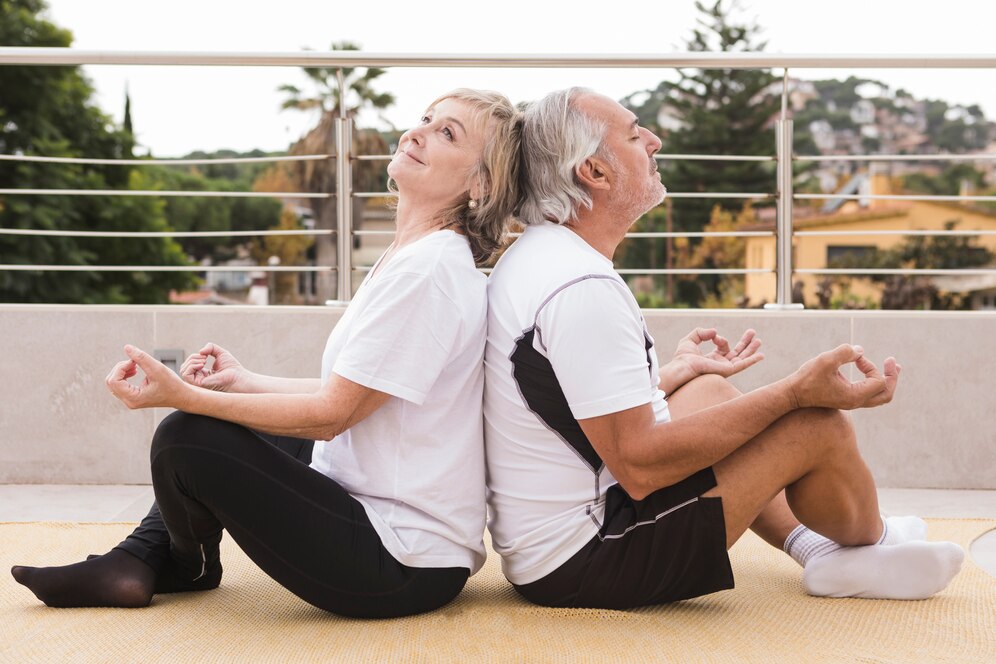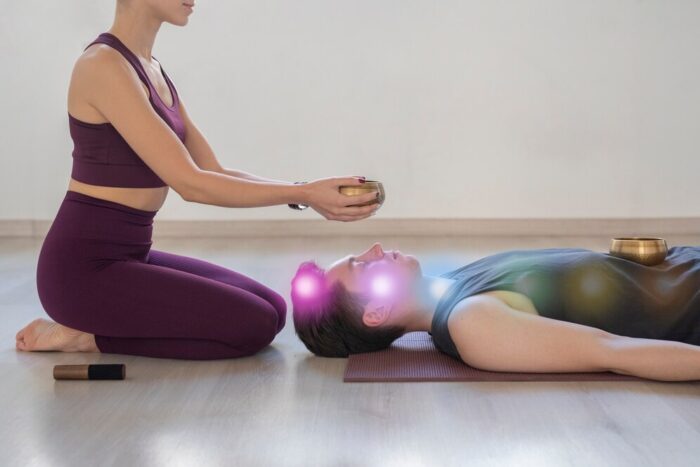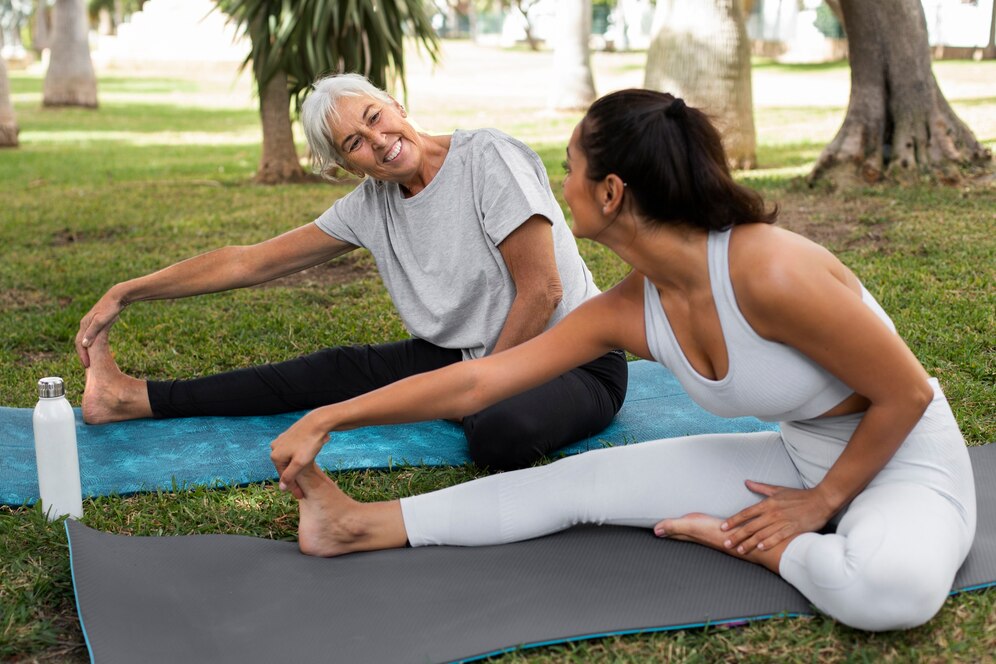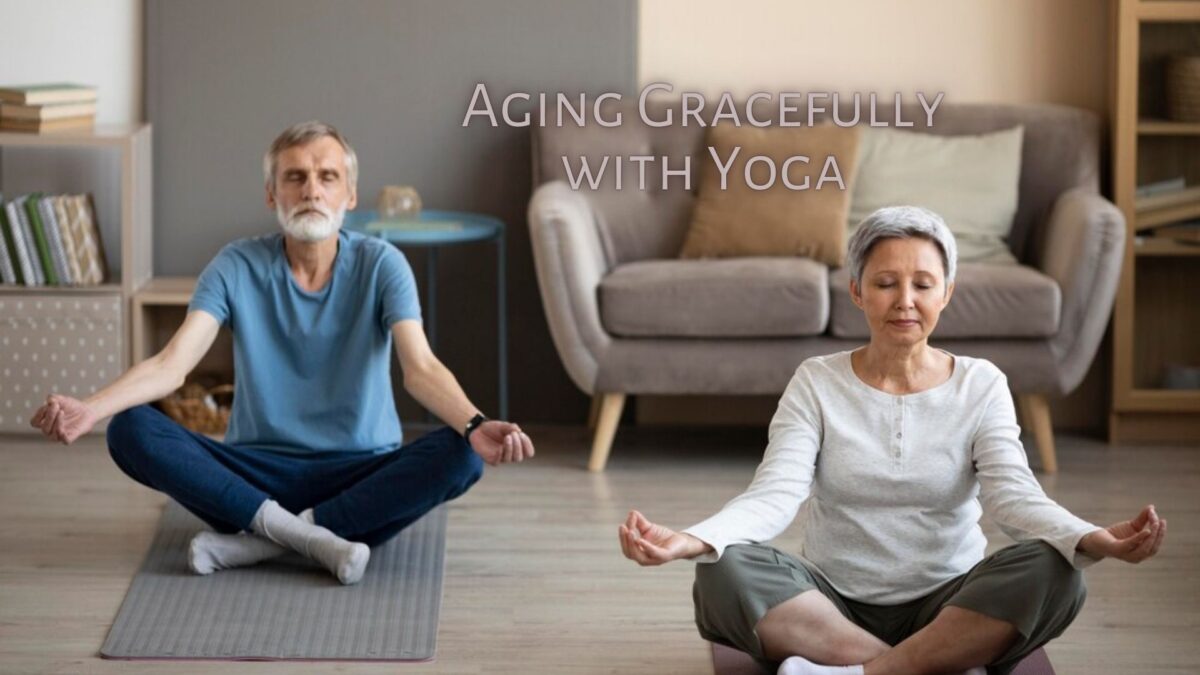As the population ages, more seniors are seeking ways to maintain their health, independence, and quality of life. Yoga, with its holistic approach to physical, mental, and emotional wellness, is becoming increasingly popular among older adults. This ancient practice offers a gentle yet effective way to enhance mental acuity and emotional wellness, help seniors in aging gracefully. In this article, we’ll explore how yoga can support mental and emotional health in seniors, provide practical tips for getting started, and share inspiring stories of those who have experienced the benefits of yoga firsthand.
The Importance of Mental and Emotional Wellness in Seniors

Aging is often associated with a range of mental and emotional challenges. Cognitive decline, memory issues, and reduced mental sharpness are common concerns as we grow older. These changes can affect a senior’s ability to live independently and enjoy life to the fullest. Additionally, emotional challenges such as loneliness, depression, and anxiety can significantly impact the quality of life in older adults.
Maintaining mental acuity and emotional wellness is crucial for seniors to continue leading fulfilling lives. Yoga, with its emphasis on mindfulness, relaxation, and physical well-being, offers a powerful tool to address these challenges. Through regular practice, yoga can help seniors enhance their cognitive functions, boost their mood, and foster a sense of inner peace.
How Yoga Supports Mental Acuity

Mindfulness and Focus
One of the core principles of yoga is mindfulness—the practice of being present in the moment. Mindfulness involves focusing your attention on the here and now, which can improve concentration and mental clarity. For seniors, practicing mindfulness through yoga can help sharpen cognitive functions and enhance the ability to stay focused on daily tasks.
Mindfulness-based yoga practices, such as meditation and mindful movement, encourage participants to tune into their breath, body sensations, and thoughts without judgment. This heightened awareness can lead to improved memory, better decision-making, and a more positive outlook on life.
Breathing Techniques
Breathing is a fundamental aspect of yoga, and specific breathing techniques, known as pranayama, can have a profound impact on brain function. Controlled breathing exercises increase oxygen flow to the brain, which helps reduce mental fatigue and enhances cognitive performance. For seniors, incorporating pranayama into their yoga routine can lead to improved mental clarity and a greater sense of alertness.
For example, alternate nostril breathing (Nadi Shodhana) is a simple yet effective pranayama technique that promotes mental balance and reduces stress. Regular practice of this technique can help seniors maintain mental sharpness and reduce feelings of anxiety.
Meditation and Memory
Meditation, a key component of many yoga practices, has been shown to have numerous benefits for memory and cognitive function. Research suggests that meditation can enhance memory by increasing the thickness of the prefrontal cortex, the area of the brain responsible for decision-making, attention, and memory.
For seniors, regular meditation can slow the progression of cognitive decline and improve memory retention. Meditation practices such as guided imagery, loving-kindness meditation, and mantra repetition are particularly beneficial for seniors looking to enhance their mental acuity.
How Yoga Supports Emotional Wellness
Stress Reduction
Stress is a common issue among seniors, often exacerbated by health concerns, loss of loved ones, and changes in lifestyle. Chronic stress can lead to a range of emotional and physical health problems, including anxiety, depression, and high blood pressure. Yoga is well-known for its ability to reduce stress by promoting relaxation and calming the nervous system.
Yoga practices that emphasize deep relaxation, such as restorative yoga and yoga nidra, are particularly effective for stress management. These practices encourage the body to enter a state of deep rest, reducing cortisol levels and promoting a sense of peace and well-being.
Improving Mood
Yoga can also have a positive impact on mood by stimulating the production of mood-enhancing hormones such as serotonin and endorphins. Regular yoga practice has been shown to reduce symptoms of depression and anxiety, making it an excellent tool for emotional wellness.
For seniors, the gentle movement and mindful breathing of yoga can help regulate mood and reduce feelings of sadness or irritability. Even simple practices like chair yoga or gentle stretching can release tension and uplift the spirit.
Community and Connection
Social connection is another important aspect of emotional wellness, particularly for seniors who may feel isolated. Participating in group yoga classes provides an opportunity to connect with others, fostering a sense of community and belonging.
Group yoga classes, whether in person or online, offer seniors a supportive environment where they can share experiences and build relationships. The sense of camaraderie and mutual support in a yoga community can significantly enhance emotional well-being and reduce feelings of loneliness.
Specific Yoga Practices for Seniors

Gentle Yoga Poses
For seniors, it’s important to choose yoga poses that are safe and appropriate for their physical abilities. Gentle yoga poses that focus on flexibility, balance, and strength can be highly beneficial. Some recommended poses for seniors include:
- Mountain Pose (Tadasana): This foundational standing pose improves posture and balance, promoting a sense of stability.
- Cat-Cow Pose (Marjaryasana-Bitilasana): This gentle spinal stretch increases flexibility in the spine and relieves tension in the back.
- Seated Forward Bend (Paschimottanasana): A seated stretch that enhances flexibility in the hamstrings and lower back.
- Legs-Up-the-Wall Pose (Viparita Karani): A restorative pose that reduces swelling in the legs and promotes relaxation.
These poses can be modified with props such as blocks, straps, or chairs to accommodate different levels of flexibility and mobility.
Chair Yoga
Chair yoga is an excellent option for seniors who have limited mobility or difficulty getting up and down from the floor. This form of yoga allows participants to perform gentle stretches and movements while seated or using a chair for support. Chair yoga can improve flexibility, strength, and balance without putting strain on the joints.
Some common chair yoga poses include seated twists, seated forward bends, and seated sun salutations. These poses can be practiced anywhere, making chair yoga a convenient option for seniors who may have physical limitations.
Guided Meditation and Relaxation
Meditation and relaxation techniques are integral to yoga practice and can be especially beneficial for seniors. Guided meditation, where a teacher leads participants through a series of visualizations or calming practices, can help seniors achieve a deep state of relaxation and mental clarity.
Yoga nidra, often referred to as “yogic sleep,” is another powerful relaxation technique. This guided practice helps the body and mind enter a state of deep rest, reducing stress and promoting emotional wellness. Seniors can practice yoga nidra lying down, making it accessible and comfortable for those with physical limitations.
Expert Opinions
Healthcare professionals and yoga instructors who specialize in working with seniors also attest to the benefits of yoga for aging populations. They emphasizes that “yoga offers a comprehensive approach to wellness that addresses both the physical and mental challenges of aging. It’s a safe and effective way for seniors to maintain their cognitive functions and emotional health.”
Yoga instructor Sarah Thompson, who leads classes for seniors, adds, “I’ve seen firsthand how yoga can transform the lives of older adults. It’s not just about physical exercise; it’s about cultivating a sense of peace, connection, and mental clarity that enhances every aspect of their lives.”
Practical Tips for Starting Yoga

Finding the Right Class
For seniors interested in starting yoga, it’s important to find a class that meets their needs and abilities. Look for classes specifically designed for seniors, which often incorporate gentle movements, props, and modifications. Many community centers, senior centers, and yoga studios offer senior-friendly classes. Online classes are also widely available, providing a convenient option for those who prefer to practice at home.
Building a Routine
Consistency is key to reaping the benefits of yoga. Seniors should aim to practice yoga regularly, even if it’s just for a few minutes each day. Starting with a simple routine that includes basic stretches, breathing exercises, and short meditation sessions can help build a sustainable practice. Over time, seniors can gradually increase the duration and complexity of their yoga sessions.
Overcoming Barriers
It’s natural for seniors to have concerns about starting a new physical activity, especially if they have mobility issues or chronic health conditions. However, yoga is highly adaptable and can be modified to suit individual needs. Seniors should consult with their healthcare provider before starting a new exercise program and choose a yoga class that aligns with their fitness level. With the right guidance and support, most seniors can safely enjoy the benefits of yoga.
Conclusion
Yoga offers a holistic approach to aging gracefully, enhancing both mental acuity and emotional wellness in seniors. Through mindfulness, breathing techniques, gentle movements, and meditation, yoga provides seniors with the tools to maintain cognitive functions, manage stress, and improve their mood. By integrating yoga into their daily routine, seniors can experience a greater sense of well-being, connection, and inner peace as they navigate the challenges of aging.
Read more here.

